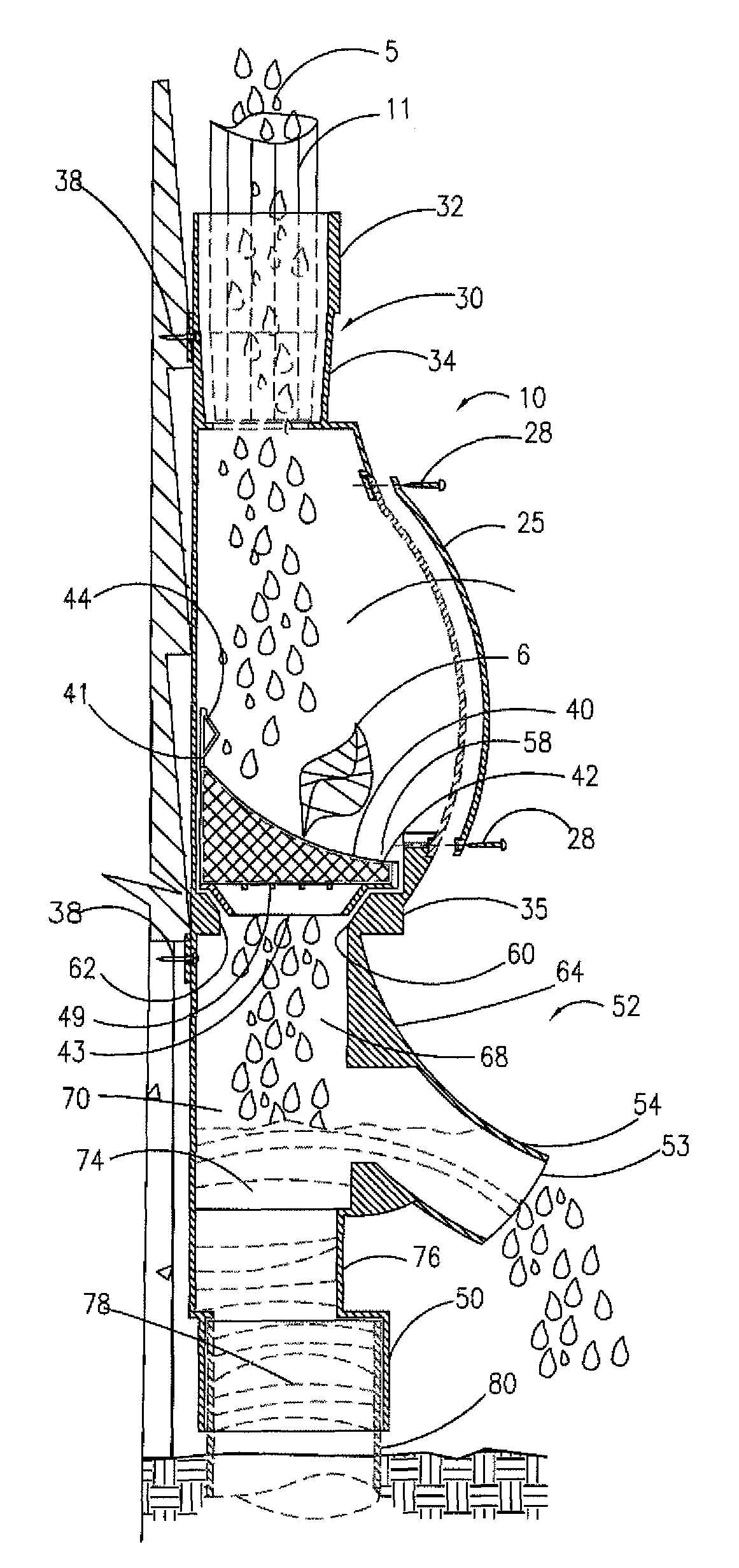Debris trap and method of trapping debris
a technology of debris traps and traps, which is applied in the direction of water cleaning, separation processes, filtration separation, etc., can solve the problems of inconvenient and dangerous tasks, clogging may still occur, and possible damage to drainage systems and protected structures
- Summary
- Abstract
- Description
- Claims
- Application Information
AI Technical Summary
Benefits of technology
Problems solved by technology
Method used
Image
Examples
Embodiment Construction
[0024]Referring to FIGS. 1 and 3-5, a debris trap 10 is shown having an upper leader inlet 30, upper chamber 20, and lower compartment 52. Upper chamber 20 has an overall width that exceeds that of lower compartment 52. The leader trap 10 is made from a rust resistant material such as aluminum, copper, galvanized steel or vinyl. In one embodiment debris trap 10 is an integral unit, injection molded from thermoplastic.
[0025]A leader 11 from a gutter on a building is placed inside the upper leader inlet 30 of the debris trap 10. The inlet 30 is a tapered female fitting which is comprised of two sections. The upper section 32 of the inlet is a rectangular tube sized to receive leader 11 and has front and side walls that overhang lower section 34. As an option for some embodiments, some or all of the walls of section 32 will thicken in a downward direction to provide internal tapering.
[0026]The internal passage of section 34 is tapered and smaller than that of section 32. This tapering ...
PUM
| Property | Measurement | Unit |
|---|---|---|
| acute angle | aaaaa | aaaaa |
| width | aaaaa | aaaaa |
| height | aaaaa | aaaaa |
Abstract
Description
Claims
Application Information
 Login to View More
Login to View More - R&D
- Intellectual Property
- Life Sciences
- Materials
- Tech Scout
- Unparalleled Data Quality
- Higher Quality Content
- 60% Fewer Hallucinations
Browse by: Latest US Patents, China's latest patents, Technical Efficacy Thesaurus, Application Domain, Technology Topic, Popular Technical Reports.
© 2025 PatSnap. All rights reserved.Legal|Privacy policy|Modern Slavery Act Transparency Statement|Sitemap|About US| Contact US: help@patsnap.com



